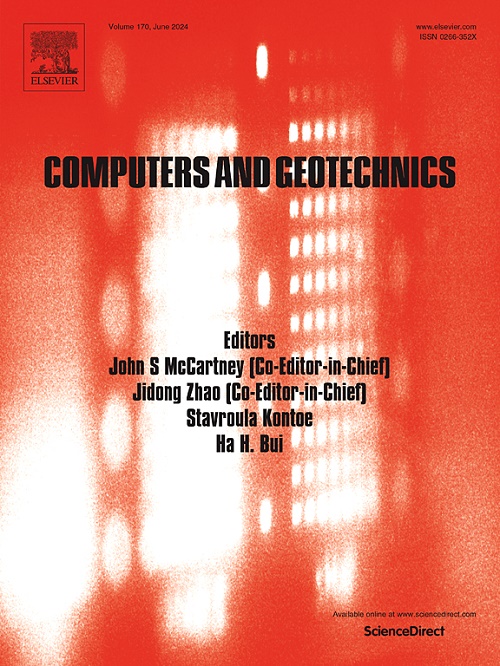Bayesian updating for improving long-term performance prediction of composite liners in landfills with temporally variable leachate head
IF 6.2
1区 工程技术
Q1 COMPUTER SCIENCE, INTERDISCIPLINARY APPLICATIONS
引用次数: 0
Abstract
Predicting the long-term performance of landfill composite liners remains challenging due to temporally variable leachate heads combined with various sources of uncertainties. This study proposes a Bayesian updating framework to enhance the prediction of composite liner performance by systematically integrating field observations with prior knowledge. The framework addresses uncertainties in key parameters—including wrinkle length, hole frequency, hydraulic conductivity, and interface transmissivity—while accounting for model bias and measurement errors. An illustrative example of a geomembrane/geosynthetic clay liner/attenuation layer (GM/GCL/AL) system under high leachate head conditions demonstrates the method’s effectiveness. Results show that iterative Bayesian updating significantly improves leakage rate predictions across different landfill operational stages and refines estimates of contaminant breakthrough time (BTT), reducing prediction errors to within − 10 % to + 5 %, outperforming approaches that partially address uncertainties. Parametric studies further reveal that higher prior coefficients of variation (COVs) for model parameters and model bias lead to more stable predictions. This approach provides a dynamic and adaptable tool for optimizing landfill liner design and maintenance, offering improved accuracy in long-term environmental risk assessment.
基于贝叶斯更新的垃圾填埋场复合衬垫长期性能预测方法
预测垃圾填埋场复合衬垫的长期性能仍然具有挑战性,因为时间变化的渗滤液头结合各种不确定性来源。本研究提出了一个贝叶斯更新框架,通过系统地将现场观测与先验知识相结合来增强复合衬垫性能的预测。该框架解决了关键参数的不确定性,包括褶皱长度、孔频率、水力传导率和界面透射率,同时考虑了模型偏差和测量误差。高渗滤液水头条件下土工膜/土工合成粘土衬垫/衰减层(GM/GCL/AL)系统的实例验证了该方法的有效性。结果表明,迭代贝叶斯更新显著提高了不同填埋场操作阶段的泄漏率预测,并改进了污染物突破时间(BTT)的估计,将预测误差降低到- 10%至+ 5%,优于部分解决不确定性的方法。参数研究进一步表明,模型参数和模型偏差的先验变异系数(cov)越高,预测越稳定。这种方法为优化垃圾填埋场衬垫设计和维护提供了一种动态的、适应性强的工具,提高了长期环境风险评估的准确性。
本文章由计算机程序翻译,如有差异,请以英文原文为准。
求助全文
约1分钟内获得全文
求助全文
来源期刊

Computers and Geotechnics
地学-地球科学综合
CiteScore
9.10
自引率
15.10%
发文量
438
审稿时长
45 days
期刊介绍:
The use of computers is firmly established in geotechnical engineering and continues to grow rapidly in both engineering practice and academe. The development of advanced numerical techniques and constitutive modeling, in conjunction with rapid developments in computer hardware, enables problems to be tackled that were unthinkable even a few years ago. Computers and Geotechnics provides an up-to-date reference for engineers and researchers engaged in computer aided analysis and research in geotechnical engineering. The journal is intended for an expeditious dissemination of advanced computer applications across a broad range of geotechnical topics. Contributions on advances in numerical algorithms, computer implementation of new constitutive models and probabilistic methods are especially encouraged.
 求助内容:
求助内容: 应助结果提醒方式:
应助结果提醒方式:


